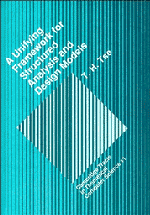 A Unifying Framework for Structured Analysis and Design Models
A Unifying Framework for Structured Analysis and Design Models Published online by Cambridge University Press: 28 January 2010
Structured systems development methodologies have been recognized as the most popular tools in information systems development. They are widely accepted by practising systems developers because of the top down nature of the methodologies and the graphical nature of the tools. Unfortunately, however, the models are only derived from the experience of the authors. In spite of the popularity of these models, relative little work has been done in providing a theoretical framework to them. In this project, we have tried to solve the problem by defining a unifying theoretical framework behind the popular structured models.
We have defined an initial algebra of structured systems, which can be mapped by unique homomorphisms to a DeMarco algebra of data flow diagrams, a Yourdon algebra of structure charts and a Jackson algebra of structure texts (with equations). As a result, specifications can be transformed from one form to another. Algebraic interpreters may be adapted to validate the specifications.
We have also found that the proposed term algebra as well as the DeMarco, Yourdon and Jackson notations fit nicely into a functorial framework. The framework provides a theoretical basis for manipulating incomplete or unstructured specifications through the concepts of structured tasks and refinement morphisms. Moreover, DeMarco data flow diagrams can be mapped to term algebras through free functors. Conversely, specifications in term algebras can be mapped to other notations such as Yourdon structure charts by means of functors.
To save this book to your Kindle, first ensure [email protected] is added to your Approved Personal Document E-mail List under your Personal Document Settings on the Manage Your Content and Devices page of your Amazon account. Then enter the ‘name’ part of your Kindle email address below. Find out more about saving to your Kindle.
Note you can select to save to either the @free.kindle.com or @kindle.com variations. ‘@free.kindle.com’ emails are free but can only be saved to your device when it is connected to wi-fi. ‘@kindle.com’ emails can be delivered even when you are not connected to wi-fi, but note that service fees apply.
Find out more about the Kindle Personal Document Service.
To save content items to your account, please confirm that you agree to abide by our usage policies. If this is the first time you use this feature, you will be asked to authorise Cambridge Core to connect with your account. Find out more about saving content to Dropbox.
To save content items to your account, please confirm that you agree to abide by our usage policies. If this is the first time you use this feature, you will be asked to authorise Cambridge Core to connect with your account. Find out more about saving content to Google Drive.